What is CRM
What is CRM? Exploring the Power of Customer Relationship Management
In today’s competitive business landscape, understanding and effectively managing customer relationships is paramount to success. Customer Relationship Management (CRM) has emerged as a powerful tool that businesses utilize to build strong connections, enhance customer experiences, and drive growth. In this article, we will delve into the concept of CRM, its benefits, and how it can transform businesses in various industries.
Introduction to CRM
CRM, short for Customer Relationship Management, is a strategy that focuses on managing interactions and relationships with existing and potential customers. It involves utilizing technology, processes, and data analysis to gain insights into customer behavior, preferences, and needs. By understanding customers better, businesses can deliver personalized experiences, improve customer satisfaction, and ultimately increase customer loyalty.
Evolution of CRM
The concept of CRM has evolved significantly over the years. Initially, CRM was centered around maintaining customer databases and contact information. However, with advancements in technology, CRM systems have become more sophisticated, incorporating features such as sales automation, marketing automation, and customer service management. Modern CRM solutions offer a comprehensive view of customers and enable businesses to streamline their operations while nurturing strong relationships.

Key Components of CRM
CRM comprises various components that work together to achieve its objectives. These components include:
1. Customer Data Management
Effective CRM relies on accurate and up-to-date customer data. This component involves collecting, organizing, and analyzing customer information, such as contact details, purchase history, and communication preferences. Customer data management ensures that businesses have a holistic understanding of their customers, enabling targeted and personalized interactions.
2. Sales Force Automation
Sales force automation (SFA) streamlines sales processes, automating repetitive tasks and enabling sales teams to focus on building relationships with customers. SFA tools often include features like lead management, contact management, opportunity tracking, and sales forecasting, empowering sales teams to be more productive and efficient.
3. Marketing Automation
CRM systems equipped with marketing automation capabilities help businesses create and execute targeted marketing campaigns. These tools enable businesses to automate tasks like email marketing, lead nurturing, and campaign management. By leveraging marketing automation, businesses can engage with customers at various touch points, nurture leads, and track campaign performance.
4. Customer Service Management
Customer service is a critical aspect of CRM. Customer service management tools assist businesses in providing timely and personalized support to customers. These tools facilitate issue tracking, case management, knowledge base management, and customer self-service portals. By delivering exceptional customer service, businesses can foster loyalty and satisfaction.
5. Analytics and Reporting
CRM systems generate valuable insights through analytics and reporting features. By analyzing customer data and behavior, businesses can identify trends, predict customer needs, and make data-driven decisions. These insights help businesses optimize their marketing strategies, improve sales processes, and enhance overall customer experience.
Benefits of CRM
Implementing CRM can yield numerous benefits for businesses across industries. Some key benefits include:
- Improved Customer Satisfaction: CRM enables businesses to understand customer needs and preferences, allowing them to provide personalized experiences and timely support. This leads to higher customer satisfaction and loyalty.
- Enhanced Sales Performance: CRM systems streamline sales processes, providing sales teams with the necessary tools and information to effectively manage leads, track opportunities, and close deals. This improves sales performance and drives revenue growth.
- Targeted Marketing Campaigns: With CRM, businesses can segment their customer base and create targeted marketing campaigns. By delivering personalized messages to the right audience, businesses can increase engagement and conversion rates.
- Efficient Customer Service: CRM systems facilitate efficient customer service management by centralizing customer information and enabling quick issue resolution. This leads to faster response times and improved customer service experiences.
- Data-Driven Insights: CRM generates valuable insights through data analysis, helping businesses identify trends, customer preferences, and areas for improvement. These insights empower businesses to make informed decisions and optimize their strategies.
Implementing CRM in Your Business
To successfully implement CRM in your business, follow these steps:
Define Your Objectives: Determine what you want to achieve with CRM. Whether it’s improving customer satisfaction, increasing sales, or streamlining processes, clearly define your goals.
Choose the Right CRM Solution: Research and select a CRM solution that aligns with your business needs and budget. Consider factors such as scalability, user-friendliness, integration capabilities, and customer support.
Cleanse and Import Data: Ensure that your customer data is accurate and complete. Cleanse your data by removing duplicates and outdated information. Import the clean data into your CRM system.
Train Your Team: Provide comprehensive training to your employees on how to effectively use the CRM system. Ensure they understand the benefits and functionalities of CRM and how it aligns with their roles.
Customize and Configure: Tailor the CRM system to suit your business processes. Configure fields, workflows, and automations to align with your specific requirements.
Integrate with Existing Systems: Integrate your CRM system with other existing systems, such as email marketing platforms, accounting software, or e-commerce platforms. This ensures seamless data flow and avoids duplicate entry.
Monitor and Analyze: Continuously monitor and analyze the data generated by your CRM system. Look for patterns, trends, and opportunities for improvement. Use these insights to refine your strategies and make data-driven decisions.
Choosing the Right CRM Solution
When selecting a CRM solution for your business, consider the following factors:
- Scalability: Choose a CRM system that can scale with your business as it grows. Ensure it can handle increasing data volumes and user numbers without compromising performance.
- User-Friendliness: Opt for a CRM system that is intuitive and easy to use. Your employees should be able to navigate the system with minimal training and quickly adapt to its functionalities.
- Integration Capabilities: Assess the CRM system’s integration capabilities with other essential systems in your business, such as marketing automation tools, e-commerce platforms, or customer support software.
- Customization Options: Look for a CRM solution that allows customization to meet your specific business needs. It should offer flexibility in configuring fields, workflows, and reports.
- Mobile Accessibility: Consider whether the CRM system provides mobile accessibility. This allows your sales teams to access customer data on the go and be productive while in the field.
- Data Security: Ensure that the CRM system provides robust data security measures to protect sensitive customer information. Look for features such as encryption, access controls, and regular data backups.

Best Practices for CRM Implementation
To ensure a successful CRM implementation, follow these best practices:
- Define Clear Objectives: Clearly define your CRM objectives and communicate them to your team. This aligns everyone’s efforts and ensures a shared understanding of the goals.
- Involve Key Stakeholders: Involve key stakeholders from different departments in the CRM implementation process. This includes representatives from sales, marketing, customer service, and IT. Their input and involvement are crucial for a successful adoption.
- Data Cleansing and Migration: Before importing data into the CRM system, clean and validate it to ensure accuracy. Identify duplicate records, outdated information, and inconsistencies. Migrate only clean and relevant data to avoid clutter and confusion.
- Provide Comprehensive Training: Offer thorough training sessions to your employees on how to use the CRM system effectively. Ensure they understand its features, functionalities, and how it benefits their specific roles. Ongoing training and support are essential for user adoption.
- Start with Key Processes: Begin implementing CRM by focusing on key processes that will provide immediate value. This could include lead management, opportunity tracking, or customer service ticketing. Gradually expand the implementation to other areas.
- Encourage User Adoption: Foster a culture of CRM adoption within your organization. Highlight the benefits of using the system and how it contributes to individual and team success. Recognize and reward employees who actively engage with CRM.
- Monitor and Measure: Continuously monitor the usage and performance of your CRM system. Track key metrics, such as user adoption rates, data accuracy, and customer satisfaction. Regularly review these metrics and make necessary adjustments.
Common Challenges in CRM Adoption
While implementing CRM can bring significant benefits, businesses often face challenges during the adoption process. Some common challenges include:
Resistance to Change: Employees may resist adopting CRM due to fear of change or concerns about job security. To overcome this, communicate the benefits of CRM and involve employees in the decision-making process.
Insufficient Training: Inadequate training can hinder user adoption. Ensure that employees receive comprehensive training on how to use the CRM system effectively. Provide ongoing support and address any questions or concerns.
Data Quality Issues: Poor data quality, such as duplicates or outdated information, can impact CRM effectiveness. Implement data cleansing measures and establish data governance practices to maintain data accuracy.
Lack of User Engagement: If employees do not see the value of CRM or understand how it benefits their roles, they may not actively engage with the system. Communicate the benefits and provide examples of how CRM improves efficiency and customer relationships.
Integration Challenges: Integrating CRM with existing systems can be complex. Ensure proper planning and coordination to avoid data integration issues. Consider consulting with IT experts or CRM implementation specialists.
Inadequate Management Support: Lack of support from management can hinder CRM adoption. Management should demonstrate their commitment to CRM and actively participate in the implementation process. Their support encourages employees to embrace CRM.

Future Trends in CRM
The field of CRM continues to evolve, driven by advancements in technology and changing customer expectations. Some future trends in CRM include:
Artificial Intelligence (AI) and Machine Learning (ML): AI and ML will play a significant role in CRM, enabling businesses to automate processes, analyze large amounts of data, and provide personalized recommendations and experiences to customers. AI-powered chat bots and virtual assistants will enhance customer service interactions, while predictive analytics will enable businesses to anticipate customer needs and make proactive recommendations.
Omnichannel Experience: Customers expect seamless experiences across multiple channels, including web, mobile, social media, and in-person interactions. CRM systems will focus on providing an integrated omnichannel experience, where customer data and interactions are synchronized across all touch points.
Social CRM: Social media platforms have become influential channels for customer interactions and brand engagement. CRM systems will incorporate social CRM capabilities to monitor and engage with customers on social media, track sentiment, and leverage social data for targeted marketing campaigns.
Voice-Activated CRM: As voice-activated devices and virtual assistants gain popularity, CRM systems will integrate voice recognition and natural language processing capabilities. This will allow users to interact with CRM systems using voice commands, making data entry and access more convenient.
Personalization and Hyper-Targeting: Customers expect personalized experiences tailored to their specific needs and preferences. CRM systems will leverage customer data and advanced analytics to deliver hyper-targeted marketing messages, offers, and recommendations in real-time.
Mobile CRM: With the increasing use of smartphones and mobile devices, CRM systems will prioritize mobile accessibility and functionality. Mobile CRM apps will enable users to access customer data, track activities, and manage relationships on the go.
Data Privacy and Security: As customer data becomes more valuable and subject to regulations, CRM systems will prioritize data privacy and security. Strong encryption, user access controls, and compliance with data protection laws will be essential features of CRM systems.
Conclusion
Customer Relationship Management (CRM) has transformed the way businesses manage customer relationships, drive sales, and enhance customer experiences.
CRM helps businesses gain insights into marketing effectiveness, and overall customer satisfaction. Enabling organizations to make data-driven decisions, improve customer relationships and optimize their operations.




